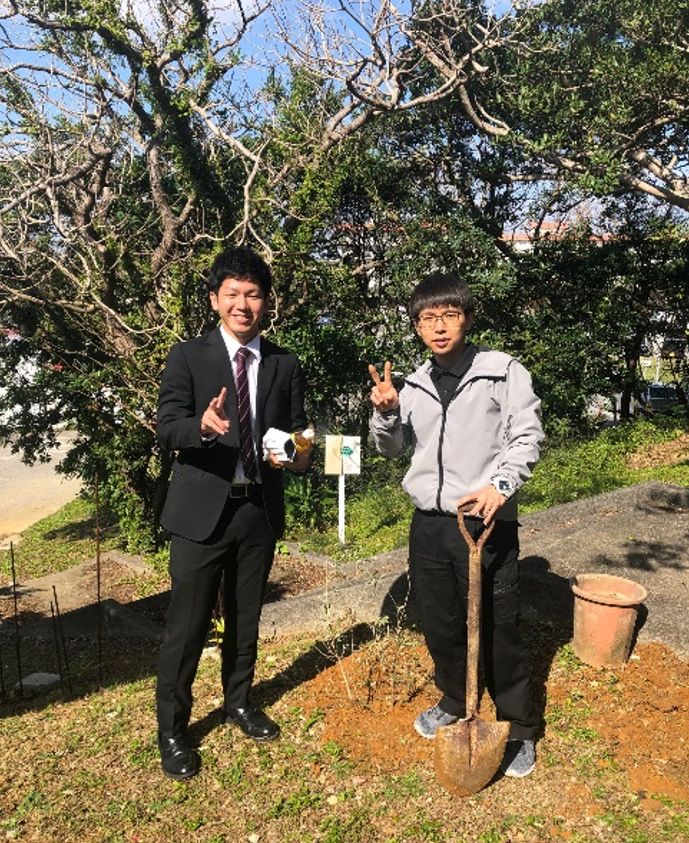Tree planting to commemorate the solution of the "underground paradox" regarding the overtopping flow coefficient
4/1 2020
The research on the wave-overtopping flow coefficient that we are tackling with is the research that former Ryukyu University professor Tsugio Kono (He died at the age of 65) started when he was an assistant at Tokyo Institute of Technology. The concept of "weir formula (discharge coefficient)", which has been dealt with in river engineering field, is applied to the predection of the wave-overtopping flow rate. The authors of the paper of the achievement are Hideo Kikkawa, Hiromi Shiigai and Tsugio Kono. The presenter of the paper was Kono. Based on the results, research on the wave-overtopping flow rate in Japan has been advanced thereafter. For example, it is the basis of the overtopping flow prediction chart (1975) for irregular waves in Goda. Goda's overtopping flow prediction chart has been a bible for seawall design mainly in Japan for about half a century since its publication. The results was also explained in Kiyoshi Horikawa (Coastal Engineering, University of Tokyo Press, 1973), which became an early textbook in Japan. During his lifetime, Professor Kono often explained the results while giving lectures with smiling. Regarding this, our laboratory, which has a long history, started research on the wave-overtopping flow by numerical imulation and large-scale flume experiment about 5 years ago. This is due to the fact that a large-scale water flume experiment device, which is an extra large scale for a university in Japan, was installed in this laboratory, and it became possible to carry out experiments at a scale of 1/2 to 1/5 of the real size (The Experiment was performed by Tanaka for doctoral course and Miyazato, Fukumori, Miyaoka and others for graduation thesis). However, when the coefficients were calculated numerically, they did not show a unified tendency and ran into the problem of large variation. According to the student (Mr. Shimoji) who was in charge of numerical calculation in his graduation research, no matter how detailed he examined it, it wouldn't go well. We continued to tuckle with this problem, but it was finally resolved in 2020, three years after the start of the research. This problem was named the "Shimoji paradox" and a considerable amount of time and effort were spent solving it. On January 13, 2021, an olive tree sent from Turkey was planted. At that time, Mr. Shimoji (currently the Okinawa General Bureau) came to visit the laboratory by chance. That's why we decided to name this tree planting a memorial to "solve the Shimoji paradox". The olive tree planting sent from Turkey was thus commemorated.

From the left, Mr. Shimo and Mr. Miyazato (currently technical staff of the Faculty of Engineering)
At the center of the foot is an olive tree sent from Turkey.
At Jiro Ozaki Memorial Hill (Orchard)
(January 13, 2021)
